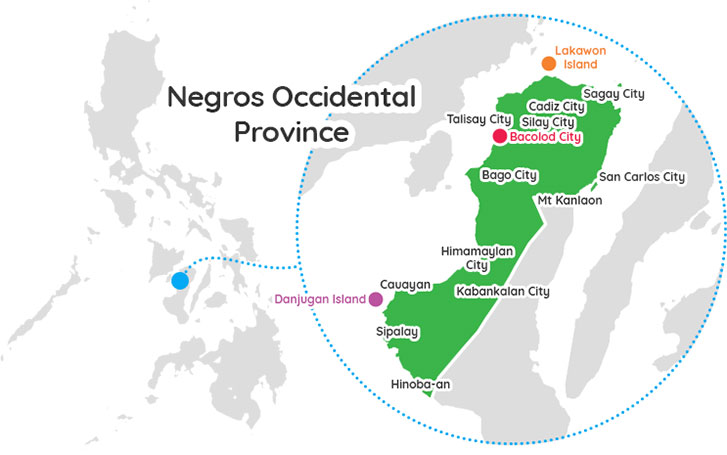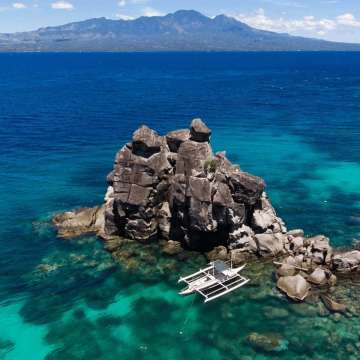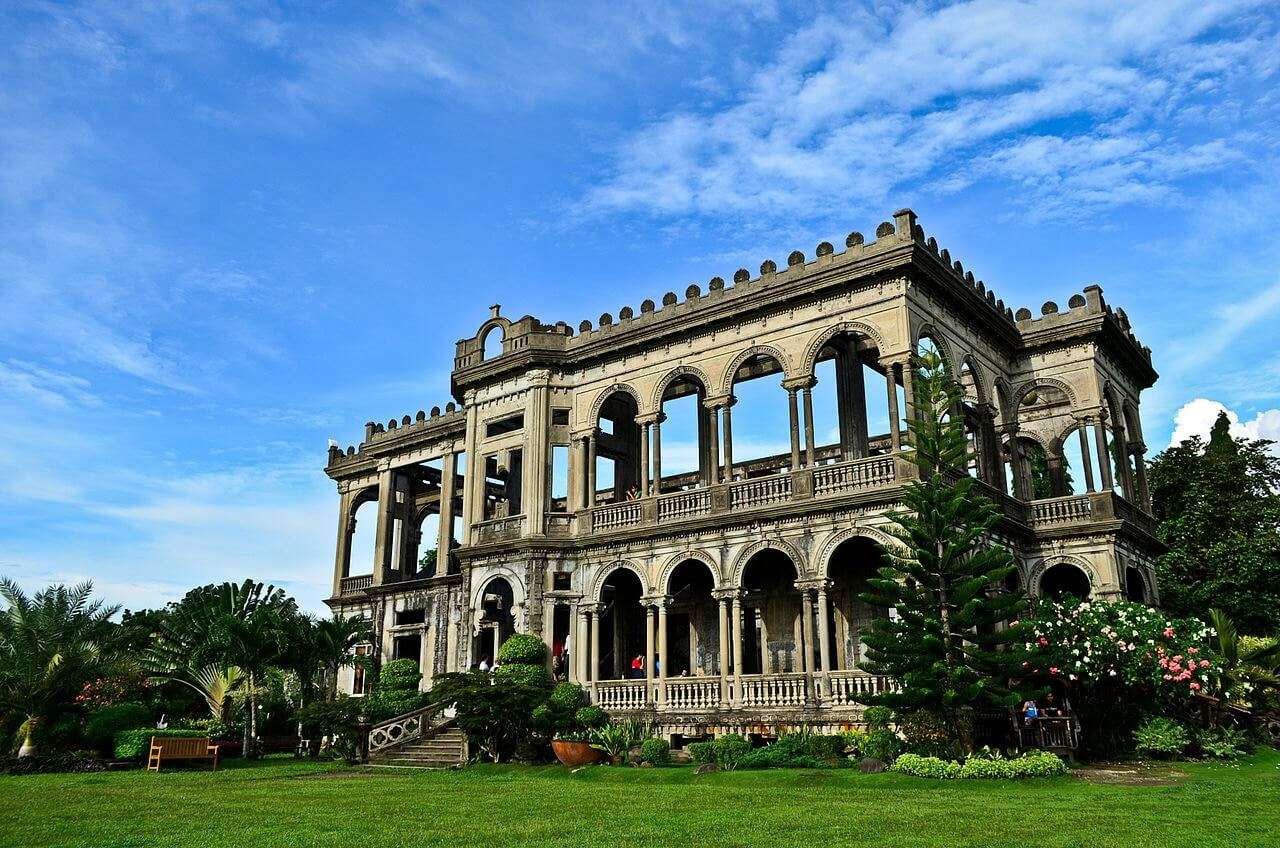About negros occidental

Negros Occidental, officially the Province of Negros Occidental, is a province in the Philippines located in the Western Visayas region. Its capital is the city of Bacolod, of which it is geographically situated and grouped under by the Philippine Statistics Authority, but remains politically independent from the provincial government. It occupies the northwestern half of the large island of Negros, and borders Negros Oriental, which comprises the southeastern half. Known as the "Sugarbowl of the Philippines", Negros Occidental produces more than half the nation's sugar output.
Negros Occidental faces the island-province of Guimaras and the province of Iloilo on Panay Island to the northwest across Panay Gulf and the Guimaras Strait. The primary spoken language is Hiligaynon and the predominant religious denomination is Roman Catholicism. Bacolod is the capital, seat of government and the most populous city of the province, but is governed independently as a highly urbanized city. With a population of 2,623,172 inhabitants, it is the most populated province in Western Visayas, the second most-populous province in the Visayas after Cebu and the 8th most-populous province of the Philippines. The province also has the most chartered cities among all the provinces in the Philippines with a total of 12, excluding Bacolod.
History
Negros was originally known to the natives as "Buglas", meaning "cut off" in old Hiligaynon. When the Spaniards arrived in April 1565, they named it "Negros" because of the dark-skinned natives they found. Two of the earliest native settlements were Binalbagan and Ilog which later became towns in 1572 and 1584, respectively. Other settlements were Hinigaran, Bago, Marayo (now Pontevedra), Mamalan (now Himamaylan) and Candaguit (now a sitio of San Enrique).
Ilog was made the first capital of the province in 1743. This was later transferred to Himamaylan. Bacolod finally became the capital in 1849. The island was divided into Negros Occidental and Negros Oriental in 1890. The two provinces were briefly unified as the independent Cantonal Republic of Negros, with Bacolod as the capital on November 27, 1898.
The Cantonal Republic of Negros became a protectorate of the United States until 1901, when the republic was dissolved, with the two provinces annexed back to the Philippines.
During the succeeding decades between 1901 and the 1930s, Negros Occidental and Negros Oriental were both under Insular Government of the United States of America as with the rest of the nation and later under the Government of the Commonwealth of the Philippines. Economic growth continued especially with Philippine sugar having a part of the US market. The socio-economic lives of the island of Negros, from the 1950s up to the late 1980s, depended as before, mainly on the sugar industry.
From 1914 to 1927, parts of Western Negros hosted several newly established settlements which became cities connected by railroads constructed to flow towards several "sugar centrals" which were processing the extremely sweet raw sugar canes grown in Negros' volcanic soil and farmed by several "Haciendas". These haciendas littered the countryside as the central sugar mills eventually grew to become full pledged towns and cities: chief among which were Ilog, Hinigaran, La Carlota, Silay, Pulupandan, Bacolod, San Carlos and Bais Western Negros also saw massive immigration from Panay as the Spanish, Chinese, and French mestizos who administered the Haciendas imported laborers from Panay island to foster the farming of Negros' sugar plantations and thereby displacing the Cebuano speaking natives.
During World War II, both Negros provinces were invaded by Imperial Japanese forces, resorting many residents to flee to the inland mountains. Negros Island was liberated by combined Philippine & American troops with the local Negrense guerillas attacking the Japanese on August 6, 1945. The 7th, 73rd, 74th and 75th Infantry Divisions of the Philippine Commonwealth Army were established from January 3, 1942, to June 30, 1946, and the 7th Constabulary Regiment of the Philippine Constabulary was active from October 28, 1944, to June 30, 1946, at the Military General Headquarters in Negros Occidental. They started the engagements of the Anti-Japanese Imperial Military Operations in Negros from 1942 to 1945 against the Japanese Imperial forces.
Members from negros occidental
Listings in negros occidental
More Provinces

metro manila (ncr)
Metropolitan Manila, formally the National Capital Region (NCR) and commonly called Metro Manila, is the capital region and largest metropolitan area of the Philippines. The region is located on the eastern shore of Manila Bay, between the Central Luzon and Calabarzon regions. It consists of 16 highly urbanized cities: the ...read more

negros oriental
Negros Oriental, officially the Province of Negros Oriental, is a province in the Philippines located in the Central Visayas region. Its capital is the city of Dumaguete. It occupies the southeastern half of the large island of Negros, and borders Negros Occidental, which comprises the northwestern half. It also includes ...read more























